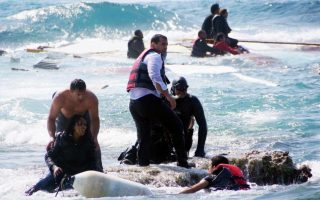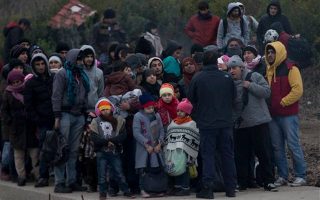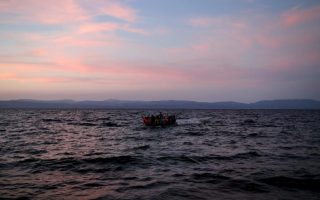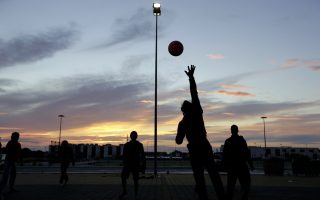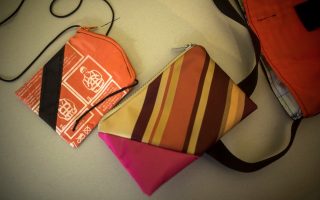Lesvos refugee effort picking up as relief machine kicks into gear
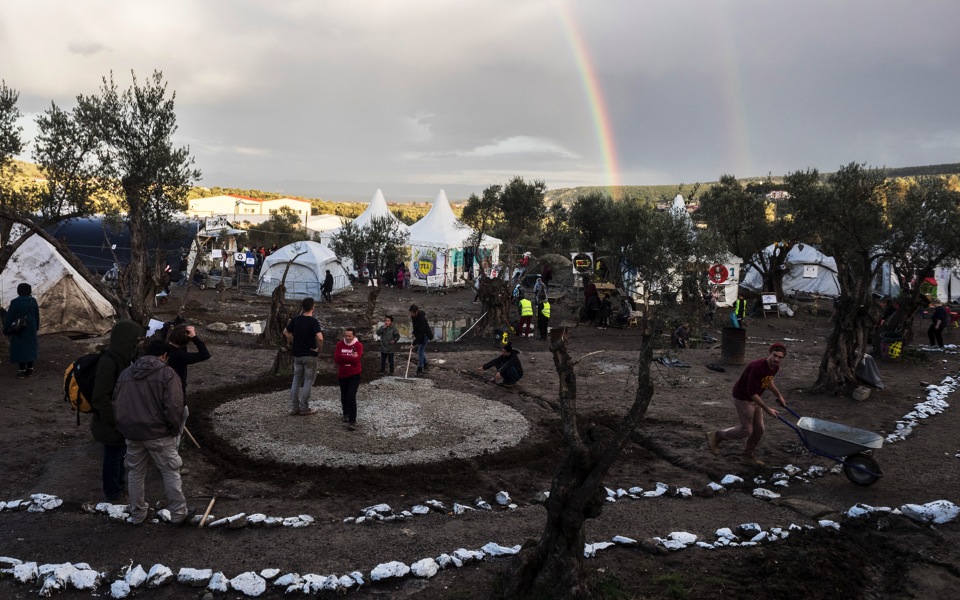
“We need to hurry up. We only have a few weeks before the weather improves and migrant arrivals pick up again,” says Boris Cheshirkov, a representative for UNHCR, the UN agency for refugees, on Lesvos. The Bulgarian has spent most recent days on the eastern Aegean island, holding meetings with local officials, volunteers and Greek government officials. Their objective is to make up for the shortcomings in receiving and documenting newcomers.
Things have radically changed over the past eight months. It is not just the fluctuations in the number of migrant boats reaching the island’s shores from Turkey (about 18,000 migrants and refugees arrived on the island in the first three weeks of January, whereas more than 130,000 people came in October 2015). Most important is the – belated – mobilization of the state mechanism. Since the beginning of last summer authorities on Lesvos have been asking for government help while seeking to set up temporary reception centers on the island’s shores.
However, the plan is only just coming to fruition and this is to a very significant extent thanks to help from volunteers.
In November, the International Rescue Committee (IRC), an international humanitarian aid, relief and development nongovernmental organization, began work to create a transit hub and temporary reception facility on a rented area near Skala Sykamias, on the northeast coast of the island.
In cooperation with other volunteers and organizations including the Red Cross, IRC has since late December provided first-aid help and legal assistance for family reunions. The NGO also provides food and shelter against the bad weather.
The understanding is that arriving asylum seekers can stay at the IRC facility for a maximum of three hours before their transfer to the official screening centers.
“We hope to provide help for 1,500 to 2,000 people a day,” Lani Fortier, deputy field director of the IRC’s Emergency Response team, says. The center is expected to be fully operational by the end of January.
Unlike last summer, staff from the EU border agency Frontex are now holding joint patrols with Greek police officers. During its survey for this report, Kathimerini met with a group of Polish border guards in the north of the island. Migrants and refugees are having their fingerprints recorded in a European database known as Eurodac. But the system is only available at Moria, a former army camp turned refugee center, and not at Kara Tepe, where prints were taken using ink.
In an olive grove near the Moria camp, volunteers have set up another reception center. At first, the volunteers were just handing out shoes. Now migrants can find food and clothes here 24 hours a day. The operation of a makeshift mosque inside a tent recently prompted the prosecutor’s intervention.
Meanwhile, a local market has emerged in the area. One can find a taxi rank and at least seven food canteens. The owners are paying rent to operate their businesses on land outside the screening center. There are also two food vending machines with CCTV surveillance.
Panayiotis Foteinos, a local, has been hired by Medecins Sans Frontieres (Doctors without Borders) as a cleaner at the Moria camp. He says he did not have a steady job before this opportunity cropped up. He will work here for one month and then can decide if he wants to extend his contract. Many of IRC’s 150 employees also live on the island. “It was an opportunity for me,” Foteinos says. “These jobs were a lifeline for unemployed people like me,” he said.
